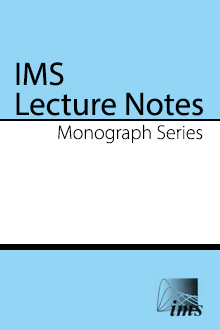Abstract
There are many applications in which one seeks to combine multiple estimators of the same parameter. If the constituent estimators are unbiased, then the fixed linear combination which is minimum variance unbiased is well-known, and may be written in terms of the covariance matrix of the constituent estimators. In general, the covariance matrix is unknown, and one computes a composite estimate of the unknown parameter with the covariance matrix replaced by its maximum likelihood estimator. The efficiency of this composite estimator relative to the constituent estimators has been investigated in the special case for which the constituent estimators are uncorrelated. For the general case in which the estimators are normally distributed and correlated, we give an explicit expression relating the variance of the composite estimator computed using the covariance matrix, and the variance of the composite estimator computed using the maximum likelihood estimate of the covariance matrix. This result suggests that the latter composite estimator may be useful in applications in which only a moderate sample size is available. Details of one such application are presented: combining estimates of agricultural yield obtained from multiple surveys into a single yield prediction.
Information
Digital Object Identifier: 10.1214/lnms/1196285392


